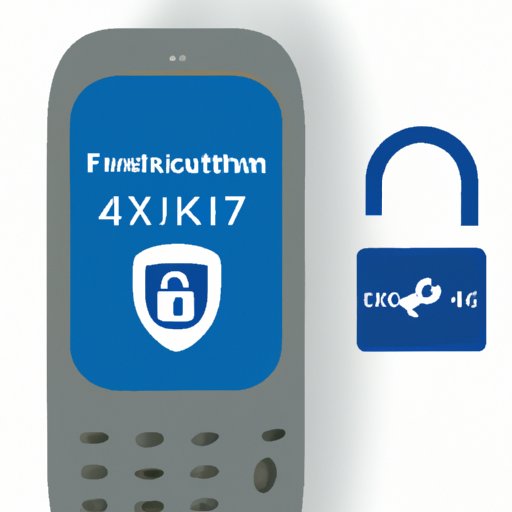Introduction
Two-factor authentication (2FA) is an important security measure that requires users to provide two different factors to gain access to an account or system. It is designed to add an extra layer of protection against unauthorized access and is commonly used by financial institutions, government agencies, and healthcare organizations. This article will explore how to automate 2FA, the benefits of automation, different types of 2FA solutions, setting up automated 2FA, examples of automated 2FA in practice, best practices for securing automated 2FA, and potential challenges.
Definition of Two-Factor Authentication
Two-factor authentication is a type of authentication that requires users to provide two different pieces of evidence or credentials to gain access to an account or system. The first factor is typically something the user knows, such as a password or PIN, while the second factor is something the user has, such as a smartphone or token. By requiring two different credentials, it makes it more difficult for attackers to gain access to an account or system.
Benefits of Automating 2FA
Automating 2FA can provide numerous benefits, including improved security, increased efficiency, and reduced costs. Automation can help streamline the authentication process, allowing users to quickly and easily access their accounts or systems without having to manually enter their credentials each time. Additionally, automating 2FA can reduce the risk of human error, which is often the cause of security breaches. Finally, automating 2FA can help reduce operational costs since manual processes are often more time consuming and expensive.

Different Types of 2FA Solutions
There are several different types of 2FA solutions available, each of which offers its own set of benefits. Biometric authentication, for example, uses unique physical characteristics, such as fingerprints or voice recognition, to identify and authenticate users. One-time passwords (OTPs) are short-lived codes that are sent to a user’s email address or mobile device and must be entered to gain access to an account or system. Push notifications are messages sent to a user’s mobile device that require them to confirm or deny access before they can gain access to an account or system.
Setting Up Automated 2FA
Setting up automated 2FA involves several steps, including selecting the appropriate 2FA solution, configuring the system, and testing the setup. When selecting a 2FA solution, it is important to consider the needs of the organization and the types of devices that will be used. After selecting the appropriate solution, the system must be configured and tested to ensure that it meets the organization’s security requirements. Finally, it is important to test the setup to ensure that it works correctly.
Tips for Optimizing Automation
When automating 2FA, there are several tips that can help optimize the process, including implementing multi-factor authentication, establishing strong security policies, utilizing data encryption, and providing user training. Multi-factor authentication adds an additional layer of security by requiring users to provide multiple forms of authentication, such as a password and a one-time code. Establishing strong security policies can help ensure that only authorized users have access to sensitive information. Utilizing data encryption can help protect data from being accessed by unauthorized individuals. Finally, providing user training can help ensure that users understand how to use the automated 2FA system.
Examples of Automated 2FA in Practice
Automated 2FA is widely used by various organizations, including banking and financial institutions, government agencies, and healthcare organizations. Banks and financial institutions often use automated 2FA to secure customer accounts and transactions. Government agencies use automated 2FA to ensure that only authorized personnel have access to sensitive information. Healthcare organizations use automated 2FA to protect patient records and other confidential information.

Best Practices for Securing Automated 2FA
When securing automated 2FA, it is important to establish strong security policies, implement multi-factor authentication, and utilize data encryption. Establishing strong security policies can help prevent unauthorized access to sensitive information. Implementing multi-factor authentication can help ensure that only authorized users have access to an account or system. Utilizing data encryption can help protect data from being accessed by malicious actors.

Potential Challenges with Automating 2FA
While automating 2FA can provide numerous benefits, there are also potential challenges that organizations should be aware of. The cost of implementation can be a challenge, as some 2FA solutions can be expensive to implement. Additionally, user resistance can be an issue, as some users may not be comfortable with the idea of automated authentication. Finally, there are potential security vulnerabilities with automated 2FA, as malicious actors may be able to bypass the authentication process if proper security measures are not in place.
Conclusion
Automating 2FA can provide numerous benefits, including improved security, increased efficiency, and reduced costs. Different types of 2FA solutions are available, including biometric authentication, one-time passwords, and push notifications. Setting up automated 2FA involves selecting the appropriate solution, configuring the system, and testing the setup. Examples of automated 2FA in practice include banking and financial institutions, government agencies, and healthcare organizations. To ensure the security of automated 2FA, organizations should establish strong security policies, implement multi-factor authentication, and utilize data encryption. Potential challenges with automating 2FA include cost of implementation, user resistance, and security vulnerabilities.
(Note: Is this article not meeting your expectations? Do you have knowledge or insights to share? Unlock new opportunities and expand your reach by joining our authors team. Click Registration to join us and share your expertise with our readers.)
